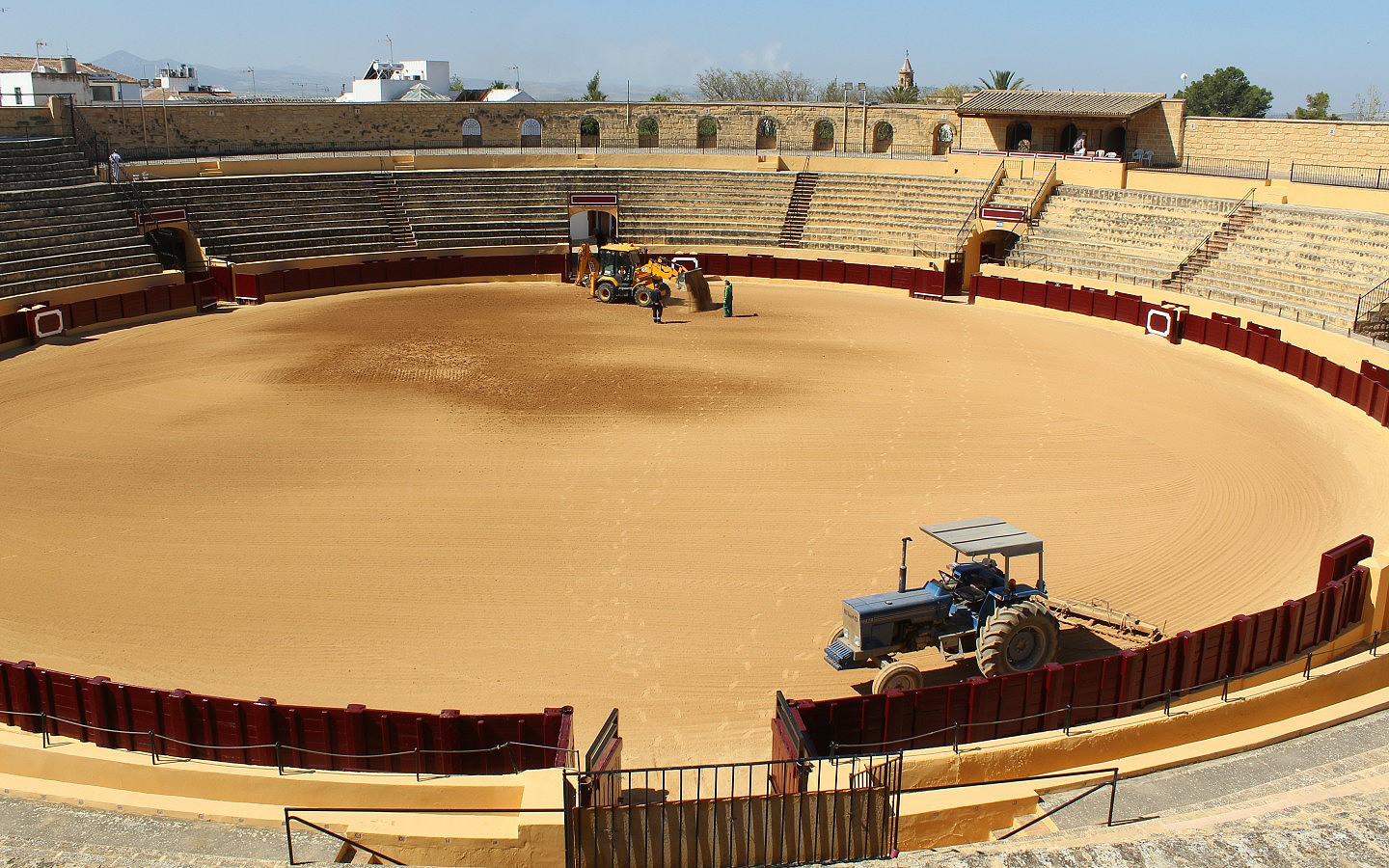Osuna was a trip discovery and a treat. Sometimes on the road you find yourself in places that weren’t on your must-see list, but on spending a little time in, reveal delights that you hadn’t imagined…

We had researched what all the online motorhome forums agreed was probably ‘Spain’s best aire’ at La Puebla de Cazalla. Free of charge and on purpose-laid hard standing, the aire also provided free electricity and hot showers for all. Unheard of!
Needing electricity to power our fridge, which is still problematic when using gas, and being in undeniable need of hot showers we set a course and passed through Osuna along the way. It looked enticing from the roadside, so we found motorhome parking at its Eroski supermarket and duly explored.

Once a key Roman garrison town, Osuna rose to prominence in the 16th century under the Dukes of Osuna. Extremely powerful, they founded the Colegiata de Santa Maria, which is a grandly Baroque church. Later, in 1548, the Dukes built the town’s University which is still attended by students.
The golden sandstone building looks less like an educational establishment and more like an exotic palace, perched on the hillside and grandly topped with blue and white-tiled minarets. We ventured into the beautiful wooden interior and bought coffee from the canteen in the marble colonnaded courtyard. What a place to study!

Behind the University, the old quarry has been carved with ancient Iberian motifs, copies of which were found around the town.
A little cheeky as it’s marketed as “Antigua Ursa”, but an interesting view, and one which has not escaped the attention of a certain TV series’ location scouts.

Down in the town the paintwork at the bullring was being spruced up and a convoy of small diggers delivered new sand. The May fiesta of bullfights was due to start and banners promoting the bulls, rather than the matadors, were being strung up by a chap in a cherry picker around the main streets.
Bullfighting is a proud Spanish tradition, but one which we didn’t wish to watch. Much of the sport is now subject to bad practice, including weakening the animals by doping them and shaving their horns.

Some romance is still attached to earlier, more gritty bullfighting in the 20th century. At Baeza we learned the sad tale of Manuel Fuentes, a legendary local matador, who had been due to fight in neighbouring Ubeda. His nephew meanwhile was in a competition in Baeza bullring which Fuentes was watching in the audience.
When the boy got into trouble with the bull his uncle ran down and into the ring to help, but without his matador regalia he was gored to death.

Researching the bullring later online, we discovered it has acquired recent fame as the setting of Daznak’s Pit in TV’s Game of Thrones series.
Probably being the only two people never to have seen an episode, we were clueless about what this meant but apparently some horrible slaughter happened over the course of 17 minutes in the bullring.

In a small town, with a population of 18,000, the arrival of Netflix production crews (and associated families and fans) meant 5,000 extra people to be housed, fed and watered.
Locals have since said it was a double-edged victory for the town, as food and accommodation businesses benefited in the short term, but the longer term interest from infrequent travelling groups of ‘Tronos’ fans has not matched the investment made by locals to support it.

Osuna was a lovely discovery, and thought-provoking too. We enjoyed its bustling centre where every independent shop had more than one local shopper inside. In the main square a group of elderly boys gathered for conversation over newspapers in the shade of the blossom trees. It seemed a pretty timeless place, with a rhythm of its own.
As we left the pretty town, its quiet streets of white terraced houses, many decorated with Baroque stonework and iron balconies, fell silent for the siesta.









